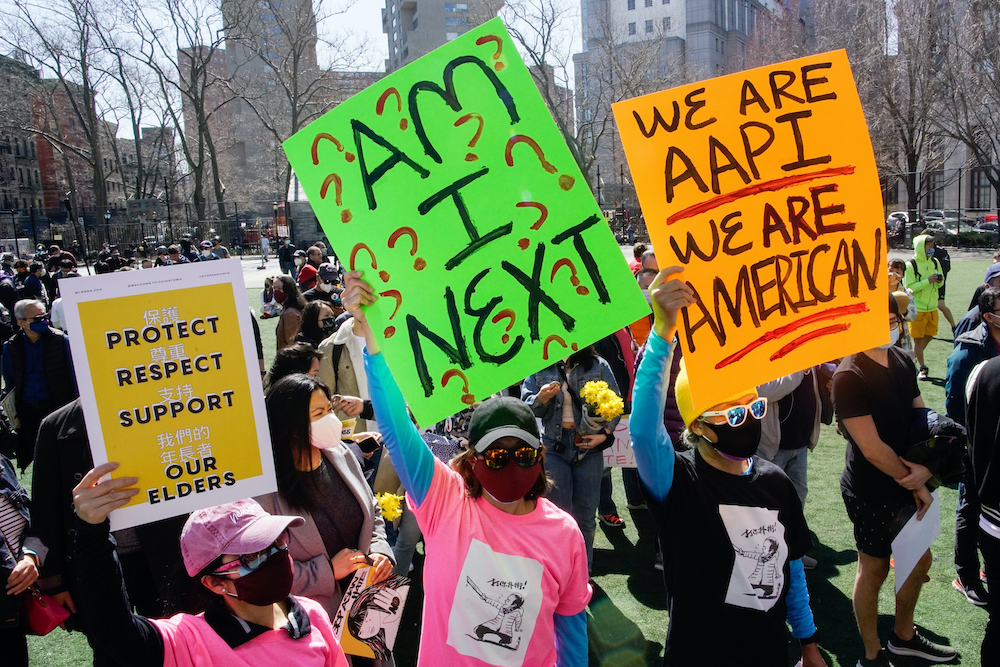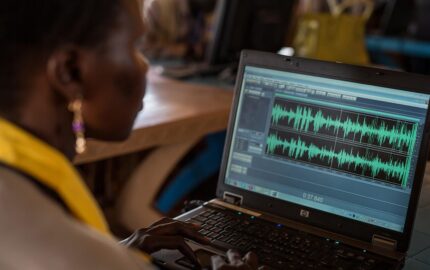At the start of the coronavirus pandemic, I was followed into my newsrooms’ building in downtown Washington, D.C. by a man who called me a “dirty bitch with the flu.”
My experience is one example of many across the country since the start of the pandemic. In a report released by nonprofit organization Stop AAPI Hate, nearly 3,800 incidents were reported over the course of roughly a year during the pandemic, with women reporting incidents 2.3 times more than men. Among the most violent incidents were the recent shootings in Atlanta, Georgia, that killed eight people, six of whom were Asian women. A large swath of the media quoted police, who cited the gunman Robert Aaron Long, in saying the violence was not racially motivated. Long also said he had a sex addiction and killed his victims to “eliminate the temptation.”
From elevating police narratives to treating the Asian American Pacific Islander (AAPI) communities as a monolith to a lack of understanding of Asian stereotypes, it was clear that the media at large was not prepared to report on the shooting. These stereotypes emerged from events in history such as the Page Act in 1882, which aimed to ban East Asian women from immigrating to the U.S. to work as prostitutes. Sexualization and fetishization stuck and, along with the stereotype that Asians ate rats and stray cats and dogs, being described as a “dirty bitch with the flu” echoes racism from centuries past. In some ways, the industry downplayed the urgency around reporting on the issue and even gun violence more broadly.
I was one of many journalists reporting on the spike in anti-Asian hate that started a year ago. Together with a team of two reporters and an editor who volunteered to help at the Center for Public Integrity (CPI), where I was the audience engagement editor, we were able to publish two high-impact stories. Our first story, co-published with NBC News, scrutinized the federal government’s response to the rise in anti-Asian hate, which paled in comparison to actions taken during the SARS outbreak and after the 9/11 terrorist attacks.
Soon after the story was published, sixteen senators, including Jack Reed and Sheldon Whitehouse of Rhode Island, Mazie K. Hirono of Hawaii, and Cory Booker of New Jersey, wrote a letter to the Civil Rights Division of the Justice Department demanding action. Their demands included working closely with the AAPI community to stem hate incidents, closer documentation, and regular progress updates sent to Congress.
We also ran a poll with Ipsos that found more than 30% of Americans have witnessed someone blaming Asian people for the pandemic. Sixty percent of Asian Americans said the same. This poll was cited in a joint letter, signed by over a quarter of Congress, asking former Attorney General Bill Barr to publicly condemn incidents of anti-Asian bias. This happened at a time when the Trump administration used xenophobic rhetoric like “China virus” and the “Kung Flu” to describe Covid-19.
President Biden and Vice President Harris traveled to Atlanta to meet with AAPI leaders and condemned anti-Asian hate in the wake of the shooting. From breaking news to investigations on anti-Asian hate, here are five things I’ve learned as an AAPI engagement editor working on this beat.
Monitor breaking news coverage
When news breaks, information about the motive, the victims, and details of who they were before they died probably won’t be made available right away. In a fast-paced news environment, information from police may be the most accessible. But it’s not the most reliable. In the case of the Atlanta shooting, amplifying police and Long’s claim that the shooting was not racially motivated gives more weight to him and to an institution with a history of violence against people of color. When coverage is less reactionary, journalists have more time to provide context and elevate the voices of people affected and the voice of the AAPI community.
Talk to AAPI experts to diversify your sources. Consult with groups like AAJA to make sure reporting avoids language that could amplify harmful stereotypes. The fast-paced nature of breaking news also makes it harder to consider language choice. In the Asian American Journalist Association’s guide to reporting on the Atlanta shootings, AAJA suggests avoiding terminology and connotations of prostitution or sexualization. The media has played a role in fetishizing Asian women, which leads to violence and discrimination.
Empower journalists of color
When I first started the CPI project, I was told by top editors that anti-Asian hate “wasn’t going to be a big thing.” It’s not surprising. Members of the Asian American Journalists Association shared similar challenges. Many AAPI journalists said their editors thought they were “too emotionally invested” or “too biased” to cover the shooting in Atlanta instead of leaning on their expertise to ensure that AAPI perspectives were accurately represented. One example: newsrooms struggled with how victims’ names were spelled and pronounced.
If you want meaningful engagement, connections and nuanced storytelling, let journalists with lived experiences lead on all levels in the newsroom. Their perspectives are valuable to communities who need them. Empowering AAPI journalists will help them report for communities instead of about them. (Hint: Asian hate isn’t new to us. Let’s think of more ways to cover the issue.)
My current team at Resolve Philly is meeting with 26 newsrooms in our “Broke in Philly” reporting collaborative to help reporters identify stories and solutions to AAPI hate in Philadelphia. We are also tackling larger issues surrounding AAPI disenfranchisement that have come to light since the pandemic started.
Map the information landscape
Before we got started, we tried to identify what the gaps in coverage were. At the start of the pandemic, we saw individual incidents being reported by local media. At CPI, we knew we had to cover the issue from a national perspective. This meant we had an opportunity to hold the federal government accountable, focus on systemic issues and elevate solutions. Making sure that we defined our role in the greater media landscape meant that we weren’t parachuting in where local outlets and activists were already doing work. That way, we were able to maximize our potential for impact from a federal level.
Be flexible
As an audience engagement editor, my first instinct was to crowdsource stories of Asian hate. It wasn’t working. I learned that there were a lot of forms circulating in AAPI groups online and adding yet another to the pile could contribute to the fatigue that the AAPI community was already feeling. We also didn’t establish the same kind of trust in the AAPI community that other outlets and activist groups had. We didn’t close the form, though. But it ended up being on the backburner. Instead, our team focused on framing and language for the stories we reported on. We made sure that our stories didn’t perpetuate stereotypes like the model minority myth, that often pits Asians against other people of color.
We also worked with Next Shark, an Asian American news site, and used its Facebook group Crimes Against Asians as an ear to the ground to inform our reporting efforts. We also partnered on an event discussing solutions to hate and building allyship between Black Americans and Asian Americans based on group interactions.
Do everything you can
Getting newsroom buy-in for engagement projects — especially about race — can be tough. I didn’t have many resources available. The colleagues who volunteered to help report had other stories they had to return to. I knew outreach was going to be a big part of what made impact possible. We sent hundreds of DMs on social media, posts in Facebook groups, emails to nonprofit organizations, mutual aid groups and even reached out to elected officials and AAPI activists to amplify the reporting. It wasn’t the fanciest approach, but it worked.
Change is incremental and impact doesn’t happen by accident. Investing in journalists of color, even a little, brings massive returns both in and out of the newsroom.
Kristine Villanueva is the project editor for “Equally Informed,” a Resolve Philly initiative that brings news and information to communities affected by the digital and information divide. Previously, she was the audience engagement editor at the Center for Public Integrity.



